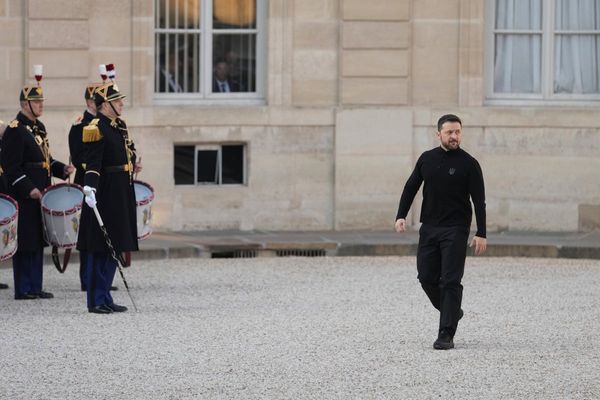Some 16 London bus routes could be axed completely.
TfL is in the middle of a six-week consultation on the future of the capital’s bus services.
They announced earlier in June that it was launching the consultation as it needs to make “significant savings” as the funding row with central Government rumbles on.
Today, Sadiq Khan has warned that cuts to Tube and bus services to the capital are imminent after the government said it would halt TfL’s long-term funding deal.
Secretary of State for Transport Grant Shapps has said the government has agreed to extend TfL’s current emergency status to July 13, after the emergency funding was due to run out on Friday.
Mr Schapps said in a letter that no more long-term funding would be given, unless its relationship with Tfl was ‘reset’.
Mr Khan said: “TfL have been left with no choice but to begin imminent preparations for a managed decline scenario which will mean further cuts to services.
“Time is running out and that is why I am once again urging the government to meet with me so that we can finally agree a sustainable, long-term funding deal that will protect not only London’s economic recovery, but that of the whole country.”
A total of 78 bus routes are facing cutbacks as a result of the “managed decline” scenario, including some of London’s best-known and oldest services.
While many of the services under review would be rerouted or have their frequency reduced under the proposals, the following services could be axed entirely as TfL says customer demand could be met by other services.
4
The number 4 bus route runs between Archway Station and Blackfriars Station, serving notable stops including Seven Sisters Road, Finsbury Park Station, Highbury Corner and St Paul’s Station among others.
11, N11
One of the longest-running bus routes in London, the number 11 has been in continuous service since 1906, serving stops between Fulham Town Hall and Appold Street.
Notable stops along the route include Westminster Cathedral, Charing Cross Station, St Paul’s Cathedral and Liverpool Street Station.
The frequency of the service was cut to five buses per hour in 2021.
The N11 night bus service operates between midnight and 6am, serving stops between Ealing Broadway Station and Liverpool Street.
12
Dating back to around 1851, the number 12 service is one of the oldest in London. The route runs between Oxford Circus and Dulwich Library, taking in notable sites including Piccadilly Circus, Trafalgar Square and Parliament Square.
The route serves Tube and Overground stations including Westminster, Lambeth North, Elephant and Castle and Peckham Rye.
14
The number 14 bus route serves stops between Putney Heath and Russell Square, including notable stops such as Putney Station, Fulham High Street, Chelsea Football Club, South Kensington Station, Green Park Station and Piccadilly Circus.
The service was rerouted to Russell Square in 2019, no longer serving stops between Tottenham Court Road and Warren Street.
16, N16
The high-profile number 16 bus service runs along an almost entirely straight route between Cricklewood and Victoria Bus Station, largely along Edgware Road.
The route includes notable stops such as Edgware Road Station, Marble Arch Station, Hyde Park Corner and Buckingham Palace Road.
In 2021, the peak time service was cut from eight buses per hour to six, and from six buses to five at other times.
The N16 night bus service follows an almost identical route that begins at Edgware Bus Station.
24
Dating back to 1910, the number 24 route currently serves stops between Grosvenor Road and Hampstead Heath.
Notable stops along the route include Victoria Station, Westminster, Leicester Square, Tottenham Court Road and Camden Town.
31, N31
The number 31 bus route serves stops between Camden and White City, including Swiss Cottage, Kilburn High Road Station, Notting Hill Gate and Shepherd’s Bush Station.
The N31 night bus service follows the same route, operating between midnight and 6am, and serving more stops.
45
Introduced in 1950, the number 45 route currently serves stops between Elephant and Castle and Clapham Park including Denmark Hill, Loughborough Junction Station and Brixton Station.
The route had previously served stops between King’s Cross and Elephant and Castle, but this part of the route was withdrawn in 2019 along with a raft of changes to other routes.
72, N72
The original number 72 route began operating in the 1930s and currently serves stops between Brunel Road in Ealing and the north side of Hammersmith Bridge.
Notable stops include East Acton Station, White City Station, Shepherd’s Bush Station and Hammersmith Bus Station.
While the 72 service stops at the north side of Hammersmith Bridge, the N72 night bus continues south towards Roehampton, with stops including Putney Pier, Barnes Station, Roehampton University and Queen Mary’s Hospital.
74, N74
The number 74 route currently serves stops between Putney Exchange and Baker Street Station, including Fulham High Street, Earls Court, South Kensington Station and Marble Arch.
The N74 night bus follows the same route, but begins in Roehampton and includes stops including Roehampton University and Queen Mary’s Hospital.
78
Serving stations including Liverpool Street, Aldgate and Peckham Rye, the number 78 bus route runs from Shoreditch High Street towards Nunhead, terminating at St Mary’s Road.
It was a number 78 bus that famously “jumped” Tower Bridge in 1952 when a watchman failed to close the gate and ring a warning bell before the bridge opened.
242
The number 242 bus route runs between Homerton Hospital and Aldgate Station, taking in stops such as Hackney Central Station, Dalston Junction Station and Shoreditch High Street.
259
Dating back to the 1960s, the number 259 bus route runs between Edmonton Green Bus Station and King’s Cross Road.
Notable stops along the route include White Hart Lane Station, Tottenham Hotspur Football Club, Finsbury Park Station and Caledonian Road.
521
Launched in 1992, the number 521 route was part of the “Red Arrow” bus network aimed at commuters in central London, linking some of the key railway and Tube stations in the capital.
The current route runs between Waterloo Station and London Bridge, stopping at stations including Holborn, City Thameslink Station, Mansion House and Monument.
The frequency of peak time 521 services was halved in 2021 from 24 buses per hour to 12.
C3
The C3 bus route currently runs from Clapham Junction Station towards Earl’s Court, terminating at Warwick Road Tesco.
The service includes stops such as Imperial Wharf Station and Earls Court Station.
D7
Launched in 1989, the D7 bus route runs from Poplar to Mile End Station. The current route covers the Canary Wharf estate - with stops serving the DLR station, Jubilee Line and Elizabeth Line termini – and the Isle of Dogs peninsula.







